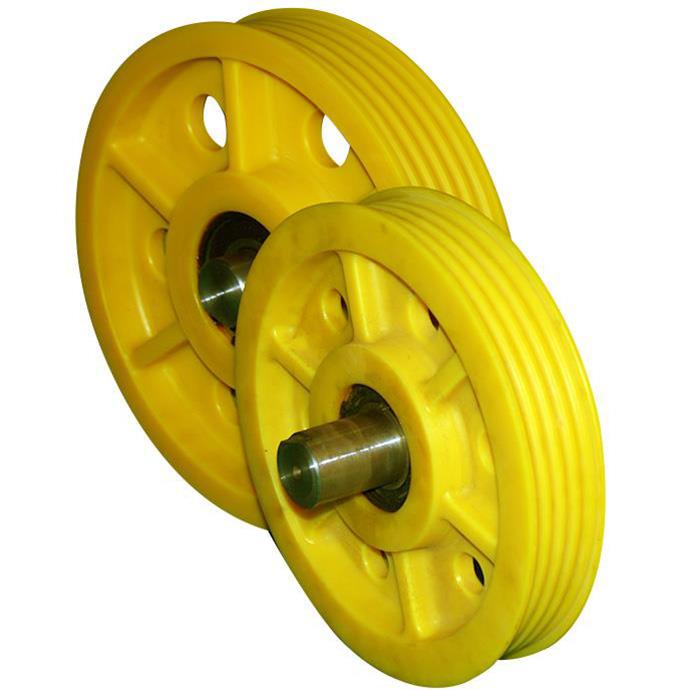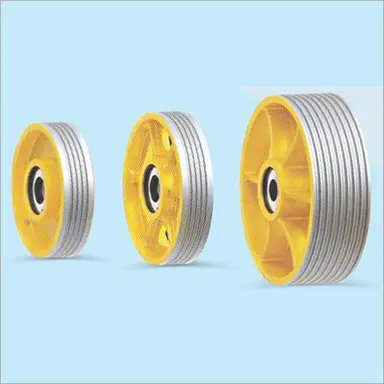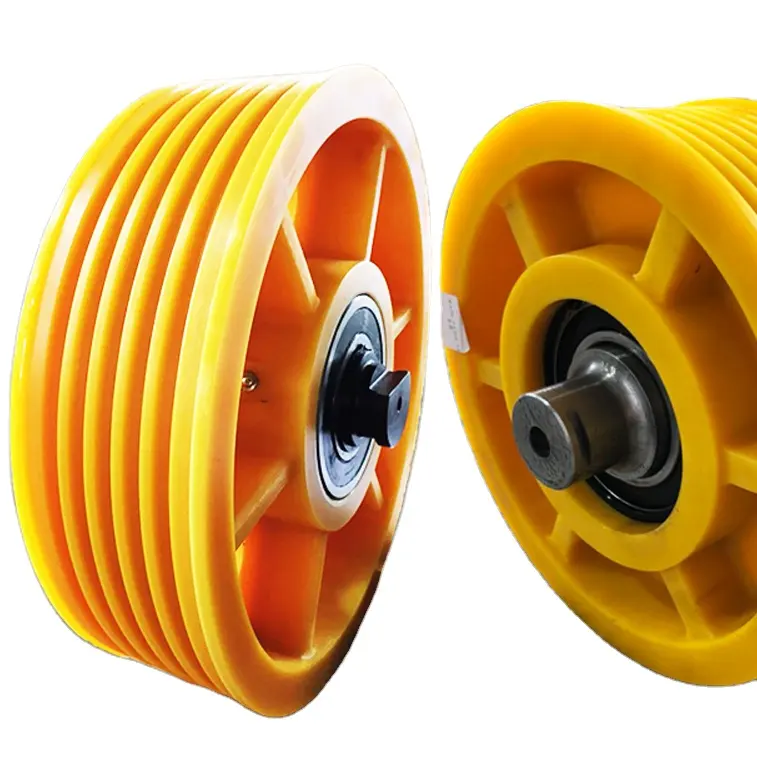Product Description
Item: Pulley Siggle
Size:5/8″ 3/4″ 1″ 1-1/4″ 2″(15-50mm)
SWL: 520lbs-1000lbs
Material: Stainless steel 304,or stainless steel 316
Packing: Cartons(20-25KGS)+ pallets(900-1000KGS)
1. How do we control quality?
a) Pay attention to adaptation for manufacture process
b) Approval report for shipment
c) Third party inspection is accepted
d) Keeping quality guarantee for a long period
e) Guaranteeing quality inspection of each product before assembly and packing.
f) Comply with ISO 9001
2. Are we a factory or a trading company?
We are a factory manufacturing .Our products mainly consist of: forged riggings, hoisting pulley block, clevis hooks, eye hooks, safety hooks, swivel hooks, shackles and so on. With the passed 10 years of hard work and pursuit of better quality.
3. What are our advantages over others?
a) HangZhou SINCERE METAL PRODUCTS COMPANY could make the clients’ ideas to be actual products with support from related engineers from different fields.
b) Producing and designing forging, casting and stamping parts has made our company in a strong position in the OEM and ODM market.
c) HangZhou SINCERE METAL PRODUCTS COMPANYbusiness is to help the overseas clients to get high quality products with fair price in China.
d) Any request from the clients would be treated carefully by our experienced staff, the quality of any order would be highly controlled by our skilled engineers.
e) HangZhou SINCERE METAL PRODUCTS COMPANY teams would like to welcome clients from home and abroad to work for the CHINAMFG situation and reach our target: Making Business More Fun!
| Surface: | Polished |
|---|---|
| Mateial: | Ss304, Ss316 |
| Delivery Time: | 10-25days |
| Transport Package: | Cartons+Plywood Pallets |
| Specification: | 15-50mm |
| Trademark: | SCE |
| Samples: |
US$ 10/Piece
1 Piece(Min.Order) | |
|---|
| Customization: |
Available
| Customized Request |
|---|
How do you select the right lifting pulley configuration for a specific lifting task?
Selecting the right lifting pulley configuration is crucial for ensuring safe and efficient lifting operations. The appropriate pulley configuration depends on various factors related to the lifting task at hand. Here are the key considerations when selecting the right lifting pulley configuration:
1. Load Capacity: Determine the maximum weight or load capacity that needs to be lifted. This information is crucial in selecting lifting pulleys that can handle the expected load without exceeding their safe working load limits.
2. Lifting Method: Consider the lifting method that will be used, such as vertical lifting, horizontal pulling, or a combination of both. Different pulley configurations, such as single sheave, double sheave, or multiple sheave blocks, are suitable for different lifting methods.
3. Pulley Efficiency: Evaluate the efficiency of the pulley system. Look for pulleys with low friction and smooth-running bearings to minimize energy losses and maximize the mechanical advantage provided by the pulley configuration.
4. Space Limitations: Assess the available space for the lifting operation. Depending on the space constraints, you may need to consider compact pulley configurations or alternative lifting methods that require less spatial clearance.
5. Environmental Factors: Consider the environmental conditions in which the lifting task will take place. Factors such as temperature, humidity, and exposure to corrosive substances may influence the choice of pulley materials and coatings to ensure durability and safe operation.
6. Required Precision: Determine the level of precision required for the lifting task. In some applications, such as delicate installations or precise positioning, a pulley configuration that allows for fine adjustments and controlled movement may be necessary.
7. Accessibility: Consider the accessibility of the lifting area. If the lifting task is in a confined or difficult-to-reach space, you may need to choose a pulley configuration that allows for easy installation, adjustment, and removal.
8. Regulatory Compliance: Ensure that the selected lifting pulley configuration complies with relevant safety standards, regulations, and industry guidelines. Adhering to these standards is essential for maintaining a safe working environment and preventing accidents.
9. Expert Advice: When in doubt, consult with lifting equipment specialists or engineers who have expertise in selecting the right pulley configuration for specific lifting tasks. They can provide valuable insights and recommendations based on their experience and knowledge.
By considering these factors and seeking expert advice when needed, you can select the appropriate lifting pulley configuration for a specific lifting task. The right pulley configuration will ensure safe and efficient lifting operations, minimize risks, and optimize performance.
Can lifting pulleys be used in both industrial and construction lifting equipment?
Yes, lifting pulleys can be used in both industrial and construction lifting equipment. Lifting pulleys are versatile components that play a crucial role in various lifting applications across different industries. They provide mechanical advantage, facilitate load distribution, and enable efficient lifting operations. Here’s how lifting pulleys are utilized in industrial and construction lifting equipment:
In Industrial Lifting Equipment:
Lifting pulleys are commonly employed in industrial settings for a wide range of lifting tasks. Industries such as manufacturing, warehousing, logistics, and material handling rely on lifting pulleys to move heavy loads, machinery, or materials. Some examples of industrial lifting equipment that utilize pulleys include:
1. Overhead Cranes: Overhead cranes are extensively used in industrial facilities to lift and move heavy loads horizontally. These cranes incorporate lifting pulleys and a trolley system to support the load and provide controlled movement. The pulleys in overhead cranes distribute the load weight and help in efficient load handling.
2. Gantry Cranes: Gantry cranes are similar to overhead cranes but operate on a different supporting structure. They are commonly used in construction sites, shipyards, or outdoor industrial areas. Gantry cranes utilize lifting pulleys to raise and lower heavy loads, enabling versatile lifting operations.
3. Forklifts and Lift Trucks: Forklifts and lift trucks are widely used in warehouses, distribution centers, and manufacturing facilities for material handling tasks. These vehicles often incorporate lifting pulleys in their mast systems to raise and lower loads efficiently.
4. Hoists and Winches: Hoists and winches are utilized in various industrial applications for lifting and pulling operations. They employ lifting pulleys to support the load and provide mechanical advantage, making it easier to lift heavy objects or move loads vertically or horizontally.
In Construction Lifting Equipment:
Lifting pulleys are also extensively utilized in construction lifting equipment to handle heavy loads, equipment, and materials at construction sites. Construction machinery and equipment often incorporate lifting pulleys in their design to enable efficient lifting and positioning operations. Some examples include:
1. Tower Cranes: Tower cranes are commonly seen at construction sites and are used for lifting and moving heavy materials and equipment vertically and horizontally. These cranes employ lifting pulleys in their lifting mechanisms, allowing for precise control and efficient material handling.
2. Mobile Cranes: Mobile cranes, such as truck-mounted or rough-terrain cranes, are versatile lifting equipment used in construction projects. These cranes utilize lifting pulleys in their boom systems to lift heavy loads and position them with accuracy.
3. Elevators and Lifts: In construction projects involving multi-story buildings, elevators and lifts are essential for vertical transportation. Lifting pulleys are integral components of elevator systems, facilitating smooth and controlled movement between floors.
4. Concrete Pumps: Concrete pumps are used to transport and pour concrete in construction projects. These pumps employ lifting pulleys to lift and position heavy concrete-filled hoses or booms, enabling precise pouring and placement of concrete.
Lifting pulleys are versatile components that can be customized to meet the specific requirements of industrial and construction lifting equipment. They provide mechanical advantage, load distribution, and efficient lifting capabilities in a wide range of applications. By incorporating lifting pulleys, both industrial and construction lifting equipment can operate safely and effectively, handling heavy loads and materials with ease.
How do lifting pulleys contribute to the smooth and controlled lifting of heavy loads?
Lifting pulleys play a crucial role in achieving smooth and controlled lifting of heavy loads. They provide mechanical advantage and facilitate the efficient transfer of force, allowing operators to lift heavy objects with reduced effort and improved control. Here are several ways in which lifting pulleys contribute to smooth and controlled lifting:
1. Mechanical Advantage: Lifting pulleys employ the principle of mechanical advantage to make lifting heavy loads easier. By using multiple sheaves or wheels, they distribute the load over several ropes or cables. This distribution of load reduces the amount of force required to lift the load. The mechanical advantage provided by lifting pulleys allows operators to exert less force while achieving the desired lifting outcome.
2. Reduction of Friction: Lifting pulleys are designed to minimize friction between the rope or cable and the pulley itself. They often feature smooth, rounded grooves or ball bearings, which reduce the contact area and frictional forces. By reducing friction, lifting pulleys enable smoother movement of the lifting medium, such as a rope or cable, resulting in a more controlled lifting process.
3. Change of Direction: Lifting pulleys allow for changes in the direction of the lifting force. By redirecting the force at different angles, pulleys enable lifting from various positions, even in confined spaces. This capability enhances flexibility and control during lifting operations, allowing operators to maneuver heavy loads with precision.
4. Force Amplification: Lifting pulleys amplify the input force applied by the operator. As the force is transmitted through the pulley system, the load experiences increased lifting force. This force amplification can be particularly beneficial when dealing with heavy loads that would require excessive force to lift without the mechanical advantage provided by the pulleys.
5. Controlled Speed: Lifting pulleys offer control over the lifting speed. By adjusting the tension and angle of the ropes or cables, operators can regulate the rate at which the load is lifted or lowered. This control is crucial for delicate or sensitive loads that require careful handling and precise positioning.
6. Stability and Safety: Lifting pulleys contribute to the stability and safety of lifting operations. They help to evenly distribute the load, reducing the risk of imbalance or tipping. Additionally, the mechanical advantage provided by the pulleys allows for smoother and more controlled movements, minimizing the likelihood of sudden jolts or jerks that could compromise the safety of the load, equipment, or personnel involved.
By utilizing mechanical advantage, reducing friction, enabling changes in direction, amplifying force, providing controlled speed, and enhancing stability and safety, lifting pulleys significantly contribute to the smooth and controlled lifting of heavy loads. Their design and functionality make them indispensable tools in various industries where material handling and lifting operations are essential.
editor by CX
2023-11-14




